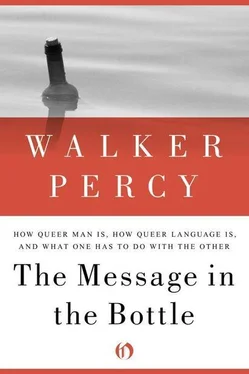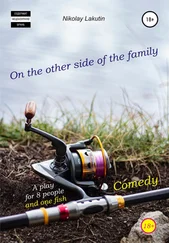2
A young Falkland Islander walking along a beach and spying a dead dogfish and going to work on it with his jackknife has, in a fashion wholly unprovided in modern educational theory, a great advantage over the Scarsdale high-school pupil who finds the dogfish on his laboratory desk. Similarly the citizen of Huxley’s Brave New World who stumbles across a volume of Shakespeare in some vine-grown ruins and squats on a potsherd to read it is in a fairer way of getting at a sonnet than the Harvard sophomore taking English Poetry II.
The educator whose business it is to teach students biology or poetry is unaware of a whole ensemble of relations which exist between the student and the dogfish and between the student and the Shakespeare sonnet. To put it bluntly: A student who has the desire to get at a dogfish or a Shakespeare sonnet may have the greatest difficulty in salvaging the creature itself from the educational package in which it is presented. The great difficulty is that he is not aware that there is a difficulty; surely, he thinks, in such a fine classroom, with such a fine textbook, the sonnet must come across! What’s wrong with me?
The sonnet and the dogfish are obscured by two different processes. The sonnet is obscured by the symbolic package which is formulated not by the sonnet itself but by the media through which the sonnet is transmitted, the media which the educators believe for some reason to be transparent. The new textbook, the type, the smell of the page, the classroom, the aluminum windows and the winter sky, the personality of Miss Hawkins — these media which are supposed to transmit the sonnet may only succeed in transmitting themselves. It is only the hardiest and cleverest of students who can salvage the sonnet from this many-tissued package. It is only the rarest student who knows that the sonnet must be salvaged from the package. (The educator is well aware that something is wrong, that there is a fatal gap between the student’s learning and the student’s life: The student reads the poem, appears to understand it, and gives all the answers. But what does he recall if he should happen to read a Shakespeare sonnet twenty years later? Does he recall the poem or does he recall the smell of the page and the smell of Miss Hawkins?)
One might object, pointing out that Huxley’s citizen reading his sonnet in the ruins and the Falkland Islander looking at his dogfish on the beach also receive them in a certain package. Yes, but the difference lies in the fundamental placement of the student in the world, a placement which makes it possible to extract the thing from the package. The pupil at Scarsdale High sees himself placed as a consumer receiving an experience-package; but the Falkland Islander exploring his dogfish is a person exercising the sovereign right of a person in his lordship and mastery of creation. He too could use an instructor and a book and a technique, but he would use them as his subordinates, just as he uses his jackknife. The biology student does not use his scalpel as an instrument; he uses it as a magic wand! Since it is a “scientific instrument,” it should do “scientific things.”
The dogfish is concealed in the same symbolic package as the sonnet. But the dogfish suffers an additional loss. As a consequence of this double deprivation, the Sarah Lawrence student who scores A in zoology is apt to know very little about a dogfish. She is twice removed from the dogfish, once by the symbolic complex by which the dogfish is concealed, once again by the spoliation of the dogfish by theory which renders it invisible. Through no fault of zoology instructors, it is nevertheless a fact that the zoology laboratory at Sarah Lawrence College is one of the few places in the world where it is all but impossible to see a dogfish.
The dogfish, the tree, the seashell, the American Negro, the dream, are rendered invisible by a shift of reality from concrete thing to theory which Whitehead has called the fallacy of misplaced concreteness. It is the mistaking of an idea, a principle, an abstraction, for the real. As a consequence of the shift, the “specimen” is seen as less real than the theory of the specimen. As Kierkegaard said, once a person is seen as a specimen of a race or a species, at that very moment he ceases to be an individual. Then there are no more individuals but only specimens.
To illustrate: A student enters a laboratory which, in the pragmatic view, offers the student the optimum conditions under which an educational experience may be had. In the existential view, however — that view of the student in which he is regarded not as a receptacle of experience but as a knowing being whose peculiar property it is to see himself as being in a certain situation — the modern laboratory could not have been more effectively designed to conceal the dogfish forever.
The student comes to his desk. On it, neatly arranged by his instructor, he finds his laboratory manual, a dissecting board, instruments, and a mimeographed list:
Exercise 22
Materials:
1 dissecting board
1 scalpel
1 forceps
1 probe
1 bottle india ink and syringe
1 specimen of
Squalus acanthias
The clue to the situation in which the student finds himself is to be found in the last item: 1 specimen of Squalus acanthias.
The phrase specimen of expresses in the most succinct way imaginable the radical character of the loss of being which has occurred under his very nose. To refer to the dogfish, the unique concrete existent before him, as a “specimen of Squalus acanthias ” reveals by its grammar the spoliation of the dogfish by the theoretical method. This phrase, specimen of , example of, instance of, indicates the ontological status of the individual creature in the eyes of the theorist. The dogfish itself is seen as a rather shabby expression of an ideal reality, the species Squalus acanthias. The result is the radical devaluation of the individual dogfish. (The reductio ad absurdum of Whitehead’s shift is Toynbee’s employment of it in his historical method. If a gram of NaCl is referred to by the chemist as a “sample of” NaCl, one may think of it as such and not much is missed by the oversight of the act of being of this particular pinch of salt, but when the Jews and the Jewish religion are understood as — in Toynbee’s favorite phrase — a “classical example of” such and such a kind of Voelkerwanderung, we begin to suspect that something is being left out.)
If we look into the ways in which the student can recover the dogfish (or the sonnet), we will see that they have in common the stratagem of avoiding the educator’s direct presentation of the object as a lesson to be learned and restoring access to sonnet and dogfish as beings to be known, reasserting the sovereignty of knower over known.
In truth, the biography of scientists and poets is usually the story of the discovery of the indirect approach, the circumvention of the educator’s presentation — the young man who was sent to the Technikum and on his way fell into the habit of loitering in book stores and reading poetry; or the young man dutifully attending law school who on the way became curious about the comings and goings of ants. One remembers the scene in The Heart Is a Lonely Hunter where the girl hides in the bushes to hear the Capehart in the big house play Beethoven. Perhaps she was the lucky one after all. Think of the unhappy souls inside, who see the record, worry about scratches, and most of all worry about whether they are getting it , whether they are bona fide music lovers. What is the best way to hear Beethoven: sitting in a proper silence around the Capehart or eavesdropping from an azalea bush?
Читать дальше












